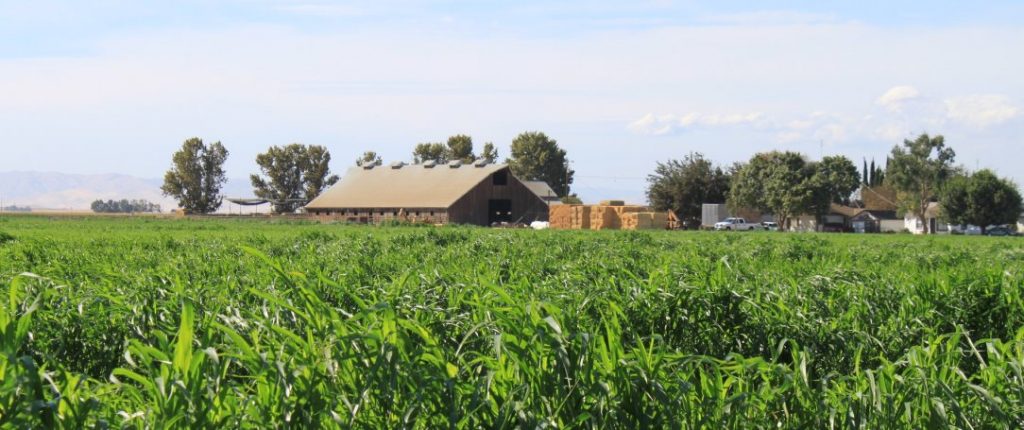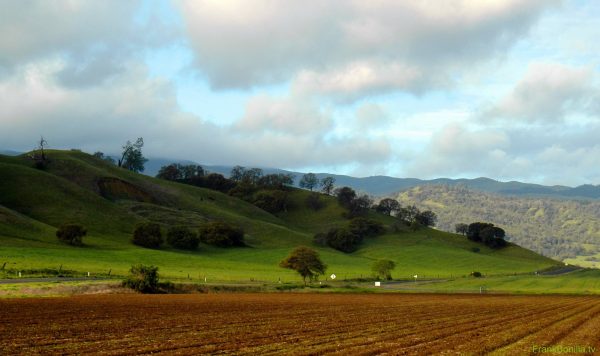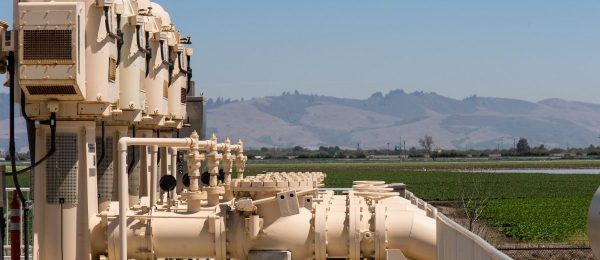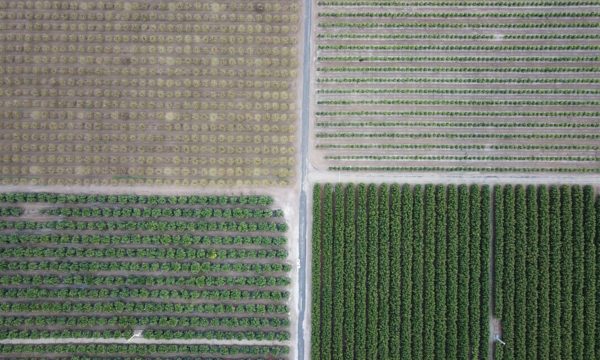WATER WRIGHTS: Semitropic WSD, Kern Water Bank, Madera Irrigation District, Tulare Irrigation District, and more …
 San Joaquin meeting coverage for May 1 through 13. Meeting coverage written by Don Wright of WaterWrights.net.
San Joaquin meeting coverage for May 1 through 13. Meeting coverage written by Don Wright of WaterWrights.net.
- Semitropic Water Storage District May 13, 2020
- Exchange Contractors May 1, 2020
- Madera County Water Market Webinar May 4, 2020
- Kaweah Delta Water Conservation District May 5, 2020
- Kern Water Bank May 5, 2020
- South Delta Water Agency May 6, 2020
- Madera Irrigation District May 7, 2020
- Tulare Irrigation District May 12, 2020
- Wheeler Ridge Maricopa Water Storage District May 13, 2020
Read more meeting coverage and sign up for email service at WaterWrights.net
DWR SGMO NEWS: GSP public comment period ending soon; Draft report on drought and water shortage vulnerability released; SVSim beta model released
From the Department of Water Resources Sustainable Groundwater Management Office
 GSP Public Comment Period Ending Soon
GSP Public Comment Period Ending Soon
Public comments on the first set of Groundwater Sustainability Plans (GSPs) are due May 15, 2020. The next comment period closes June 3, 2020.
The Department of Water Resources (DWR) extended public comment periods for submitted GSPs by 30 days due to the COVID-19 pandemic. Comment periods vary based on when a plan was posted to the DWR website.
DWR encourages public review and comment on submitted plans which show how local water agencies plan to manage groundwater basins for long-term sustainability. Comments can be posted and viewed online on the DWR SGMA Portal and a SGMA Portal account is not necessary.
Information about how to comment on a plan can be found in fact sheets in English and Spanish.
For questions, email sgmps@water.ca.gov.
Draft Report on Drought and Water Shortage Vulnerability Released
DWR recently released the draft Small Water Suppliers and Rural Communities at Risk of Drought and Water Shortage Vulnerability and Recommendations and Guidance to Address the Planning Needs of these Communities report. The report provides information for GSAs to consider and incorporate into future updates to GSPs and will help inform management decisions as these plans are implemented.
DWR created a new online Water Shortage Risk tool that can be used to explore the relative risk assessment of small water suppliers and rural communities in groundwater basins.
The public comment period ends June 19, 2020. Two webinars will be scheduled to discuss the report recommendations and the Water Shortage Risk tool.
Comments can be submitted online or emailed to DroughtRisk@water.ca.gov.
More information is available on the Countywide Drought and Water Shortage Contingency Plans webpage.
SVSim Beta Model Released
DWR has released the beta version of the Sacramento Valley Groundwater-Surface Water Simulation Model (SVSim) that can be used during GSP development. Instructions for use are included in the Roadmap to Running SVSim document. A calibrated version of SVSim is expected in fall 2020.
For questions or more information, please email Linda Bond at Linda.Bond@water.ca.gov or Chris Bonds at Chris.Bonds@water.ca.gov.
View Video on Draft Water Budget Development Handbook Webinar
The April 21 webinar for the Handbook for Water Budget Development: With or Without Models is now available online. The webinar focuses on challenging water budget topics. The handbook presents existing information on various methods and data sources for developing water budgets and can help in the development of water budgets for any geographic area and time period.
The public comment period for the handbook was extended by 30 days because of the pandemic and closes May 7, 2020. Email comments to cwpcom@water.ca.gov, attention Abdul Khan.
For more information, view Frequently Asked Questions on the Water Budget Handbook or visit the Reports tab on the Data and Tools webpage.
REMINDER Public Meetings Can Be Held Remotely During Pandemic
Governor Newsom’s Executive Order N-25-20 encourages elected officials to conduct public meetings by teleconference or other electronic venue during the pandemic. The order temporarily waives requirements in the Bagley-Keene Act and Brown Act as long as specific requirements are met. The order applies to groundwater sustainability agencies and others involved in the implementation of the Sustainable Groundwater Management Act.
REMINDER Written Translation Service Available
DWR’s written translation service is available to help with communication to non-English speaking constituents. Translation services for materials are available in Chinese, Hmong, Korean, Laotian, Punjabi, Spanish, Tagalog, and Vietnamese.
Visit the Written Translation tab on the Assistance and Engagement webpage for details.
REMINDER Submit Your GSP Initial Notification
Before starting a GSP, agencies are required to notify DWR in writing using the SGMA Portal – GSP Initial Notification System. The portal allows edits to be made to previously submitted Initial Notifications, including the ability to withdraw a submittal.
For more information, contact the regional coordinators in DWR’s four Regional Offices. For assistance with the system, email monica.reis@water.ca.gov.
Connect with Your Basin Point of Contact
DWR has designated basin points of contact to assist local agencies as they develop and implement their plans and to assist with applications for Technical Support Services and Facilitation Support Services.
For regional inquiries, contact sgmp_rc@water.ca.gov.
For general inquiries, contact sgmps@water.ca.gov.
SGMA in the news
NORTHERN CALIFORNIA
Supervisors agree to form groundwater agency for Eel River Basin: “The last item on the agenda, following a lengthy closed session, was a public hearing to consider forming a Groundwater Sustainability Agency (GSA) for the Eel River basin. Hank Seemann, the county’s deputy director of environmental services, explained that local officials don’t really want to form such an agency because they don’t believe one is really necessary. County staff had submitted a Groundwater Sustainability Plan Alternative, in lieu of a full plan, to the California Department of Water Resources, arguing that the precious groundwater in that basin is not at risk of drying up under the current uses and conditions. … ” Read more from the Lost Coast Outpost here: Supervisors agree to form groundwater agency for Eel River Basin
SAN JOAQUIN BASIN
How reliable are Groundwater Sustainability Plans? “Earlier this year, the first local Groundwater Sustainability Plans (GSPs) were submitted to California’s Department of Water Resources for basins with the most severe groundwater overdraft. To comply with the Sustainable Groundwater Management Act, these plans must address any “significant and unreasonable” impacts of groundwater overdraft that occurred after January 1, 2015, including lowering groundwater levels and other “undesirable results.” The math for ending overdraft is simple: groundwater basins must balance their budgets, by increasing groundwater recharge and reducing pumping. In principle, evaluating the adequacy of these plans to achieve sustainability should also be simple: Does the anticipated reduction in pumping plus increase in recharge equal or exceed the basin’s long-term rate of overdraft? ... ” Read more from the California Water Blog here: How reliable are Groundwater Sustainability Plans?
Farmers hijack community water access despite groundwater act, activists say: “When a fire started on the property next door to Ray Cano’s home, the neighbors used Cano’s hose and well to fight the flames. Running the pump at full throttle, they managed to control the blaze until the fire department arrived. Then, the well’s pump sputtered to a stop. Cano later called a well inspector, who did some basic probing and discovered the problem: The well had run dry, causing the pump’s motor to overheat. Cano had the man install a new pump and run the line about 40 feet deeper. “He said that would last me another three or four years,” said Cano, a mailman who lives with his wife in Tombstone Territory, a cluster of homes in central Fresno County surrounded by orchards. That was in May 2015 ... ” Read more from KCET here: Farmers hijack community water access despite groundwater act, activists say
Tulare County: Deadline extended for second round of GSP comments: “As Groundwater Sustainability Agencies continue implementing their plans, the state has extended the deadline for the second round of public comments, citing disruptions caused by the COVID-19 pandemic. Eric Osterling, the general manager of the Greater Kaweah GSA, said that despite the pandemic, GSAs are continuing to work and implement their Groundwater Sustainability Plans (GSP). We can’t stop. It seems like so much has stopped, but we don’t have the luxury to stop,” Osterling said. “We have deadlines that we still have to meet and we have to show what work we’ve put in during our annual report.” … ” Read more from the Foothills Sun-Gazette here: Deadline extended for second round of GSP comments
VENTURA COUNTY
The Fox Canyon water market: a market-based tool for groundwater conservation goes live: “Ventura County, California, is an agricultural powerhouse. In 2017, its revenues from agriculture were an estimated $2.1 billion. It also faces extraordinary population pressure, with nearly 450 people per square mile – about five times the average population density of the United States. Both agriculture and infrastructure are dependent on, and impacted by, the availability of water – which has itself been impacted by California’s rapidly-diminishing groundwater reserves. … Following passage of SGMA, The Nature Conservancy (TNC) applied for and received a $1.8 million Conservation Innovation Grant from USDA’s Natural Resources Conservation Service (NRCS) to develop the Fox Canyon Water Market. ... ” Read more from the Department of Agriculture here: The Fox Canyon water market: a market-based tool for groundwater conservation goes live
ESSAY ON RESOURCE GOVERNANCE
Resource governance in the American West: Institutions, information, and incentives: “The American West is a peculiar place. Depending on the location, the West can be drier, wetter, hotter, colder, or more rugged than the eastern United States. Much of the West receives only five to fifteen inches of precipitation each year, compared to thirty to fifty inches in eastern states. Regional variation is also much greater in the West. … Drawing from the insights of Ostrom and others, this chapter explores the emergence of various institutions governing the management of natural resources in the American West, both past and present, and discusses modern challenges associated with natural resource governance. It concludes by exploring policy reforms that would enable more cooperative, bottom-up solutions to today’s resource management challenges in the American West. … ” Read more from PERC here: Resource governance in the American West: Institutions, information, and incentives
Fair Water: Researchers look at the perception of fairness in SGMA implementation
 Fairness – or at least the perception of fairness – could play a determining role in the future of California’s groundwater, according to new research. The study, published in Society and Natural Resources, evaluated 137 surveys of Yolo County farmers to gauge their perceptions of fairness for groundwater allocation strategies and dispute resolution options. As required by the state’s Sustainable Groundwater Management Act (SGMA) in January of 2020, Groundwater Sustainability Agencies (GSAs) of critically over-drafted water basins submitted plans to sustainably manage groundwater pumping and allow for basin recharge within the next 20 years. These plans, which inevitably include stricter allocation of groundwater and pumping limits, directly impact farmers of the nation’s largest agricultural state.
Fairness – or at least the perception of fairness – could play a determining role in the future of California’s groundwater, according to new research. The study, published in Society and Natural Resources, evaluated 137 surveys of Yolo County farmers to gauge their perceptions of fairness for groundwater allocation strategies and dispute resolution options. As required by the state’s Sustainable Groundwater Management Act (SGMA) in January of 2020, Groundwater Sustainability Agencies (GSAs) of critically over-drafted water basins submitted plans to sustainably manage groundwater pumping and allow for basin recharge within the next 20 years. These plans, which inevitably include stricter allocation of groundwater and pumping limits, directly impact farmers of the nation’s largest agricultural state.
Below, the paper’s lead author, Courtney Hammond Wagner, and senior author, Meredith Niles, discuss their research examining what farmers identify as fair water allocation and how these perceptions can ultimately impact successful SGMA execution. Hammond Wagner is a postdoctoral scholar at Stanford’s Water in the West program, and Niles is an assistant professor at the University of Vermont.
Utilizing excess winter stormwater flows for groundwater recharge
 Kristin Sicke is the Assistant General Manager for Yolo County Flood Control and Water Conservation District, which manages water supplies for 200,000 acres in western Yolo County, which encompasses Woodland, Davis, and the surrounding area. The District manages a small hydroelectric plant, two reservoirs, more than a 150 miles of canals and laterals, and three dams including the world’s longest inflatable rubber dam. In this presentation from the 2019 Western Groundwater Congress, Ms. Sicke describes the District’s efforts to use winter stormwater flows for groundwater recharge in the Yolo subbasin.
Kristin Sicke is the Assistant General Manager for Yolo County Flood Control and Water Conservation District, which manages water supplies for 200,000 acres in western Yolo County, which encompasses Woodland, Davis, and the surrounding area. The District manages a small hydroelectric plant, two reservoirs, more than a 150 miles of canals and laterals, and three dams including the world’s longest inflatable rubber dam. In this presentation from the 2019 Western Groundwater Congress, Ms. Sicke describes the District’s efforts to use winter stormwater flows for groundwater recharge in the Yolo subbasin.
Water resources management in the Pajaro Valley Basin
 The Pajaro Valley is home to a billion-dollar agricultural industry, it’s rich, fertile soil providing fruits and vegetables for the nation and all grown with groundwater. Located on the Central Coast, the Pajaro Valley has no connection to the State Water Project or to otherwise bring in imported water.
The Pajaro Valley is home to a billion-dollar agricultural industry, it’s rich, fertile soil providing fruits and vegetables for the nation and all grown with groundwater. Located on the Central Coast, the Pajaro Valley has no connection to the State Water Project or to otherwise bring in imported water.
In 1980, the Department of Water Resources published Bulletin 118, identifying the Pajaro Valley as one of eleven basins in the state considered critically overdrafted. Community leaders recognized that local management of the groundwater basin was necessary as seawater intrusion was already impacting agricultural water supplies as well as domestic wells; however, there was no single agency with authority to manage the entire basin which encompasses parts of Santa Cruz, Monterey, and San Benito counties as well as the City of Watsonville. So in 1984, local legislators spearheaded the state legislation necessary to form the a multi-jurisdictional agency to manage groundwater which was subsequently approved by local voters.
Since that time, the Pajaro Valley Water Management Agency has been working toward sustainable management of the Pajaro Valley’s water resources. At the 2019 Western Groundwater Congress, General Manager Brian Lockwood discussed the projects and programs the Agency is implementing as they work towards achieving groundwater sustainability.
Video of water budget webinar now available
 A video is available of last week’s webinar on the draft Handbook for Water Budget Development: With or Without Models. The DWR publication provides multiple methods for developing water budgets for any geographic area. The webinar covered ways to use various portions of the handbook. Public comments on the draft are being accepted through Thursday May 7.
A video is available of last week’s webinar on the draft Handbook for Water Budget Development: With or Without Models. The DWR publication provides multiple methods for developing water budgets for any geographic area. The webinar covered ways to use various portions of the handbook. Public comments on the draft are being accepted through Thursday May 7.
SGMA in the news
Droughts exposed California’s thirst for groundwater. Now, the state hopes to refill its aquifers: “California’s Central Valley—one of the richest agricultural regions in the world—is sinking. During a recent intense drought, from 2012 to 2016, parts of the valley sank as much as 60 centimeters per year. “It isn’t like an earthquake; it doesn’t happen, boom,” says Claudia Faunt, a hydrologist with the U.S. Geological Survey. But it is evidence of a slow-motion disaster, the result of the region’s insatiable thirst for groundwater. … ” Read more from Science Magazine here: Droughts exposed California’s thirst for groundwater. Now, the state hopes to refill its aquifers
Allocating floodwaters to replenish groundwater basins: “How can floodwaters reduce groundwater overdraft? Water users have two options for bringing overdrafted groundwater basins into balance: reduce pumping or increase groundwater supplies. In many places, recharging basins with floodwaters from winter and spring storms is one of the most promising supply-side approaches. With SGMA, interest in capturing this water is at an all-time high. In the San Joaquin Valley, 28 of the 36 groundwater sustainability plans propose recharge projects. Total demand for floodwaters is so high that it outstrips what is likely to be available. Competition could be fierce. ... ” Read more from the PPIC here: Allocating floodwaters to replenish groundwater basins
Water availability for San Joaquin Valley farms: a balancing act: “Why does surface water access matter for groundwater sustainability? Although the San Joaquin Valley has the largest groundwater deficit in the state, water resources vary considerably within the region. A few areas receive abundant surface water. Most others supplement with groundwater. Still others depend entirely on groundwater. In many areas, groundwater is being used at unsustainable rates and pumping will need to be cut to bring basins into balance. … ” Read more from the PPIC here: Water availability for San Joaquin Valley farms: a balancing act
Dairy operators strike balance to protect groundwater: “Over the last 20 years, University of California research has shown that dairies in the San Joaquin and Sacramento valleys of California are potentially major contributors of nitrate and salts in groundwater, and to maintain groundwater quality, the California Water Resources Control Board has ramped up regulations to ensure that dairy manure and wastewater application isn’t contaminating the aquifer. University of California Cooperative Extension (UCCE) advisor Nick Clark is helping farmers in Fresno, Kings and Tulare counties of California work through the process and continue producing crops sustainably now and in the future. … ” Read more from the Western Farm Press here: Dairy operators strike balance to protect groundwater
SGMA Through the Lens of an Agricultural Lender: Jerred Davis, Conterra Ag AVP Relationship Manager writes: “Surface water supplies and weather conditions in California lack predictability. Over time the snowpack in the Sierra Nevada mountain range has shown a boom and bust pattern. The one constant historically relied upon by agricultural operations, and those financing them, was groundwater, either as a primary or supplemental supply. Entire operations may have depended on 100 percent groundwater, and that method was not considered high-risk. As many aquifers, especially within the San Joaquin Valley and some coastal areas continued to be over drafted due in large part to regulatory constraints in the Sacramento-San Joaquin Delta and other key watersheds, subsidence, water quality issues and other issues arose again. It was to resolve these issues (among other reasons) that the Federal and State surface water projects were developed decades ago. … ” Read more from Water Wrights here: SGMA Through the Lens of an Agricultural Lender
Ridgecrest: Indian Wells Valley Water District board hears updated water solution alternatives: “The IWV Water District updated its presentation regarding alternative water sources to it has explored over the years during a virtual board meeting Monday night. The meeting, held via a Webex meeting app, was full of first-time glitches, including a lot of feedback from microphones and speakers, delays in speakers presenting and difficulty registering verbal public comment. Consulting engineer Chuck Krieger went over some of the basic alternatives the water district had considered in the past, including the ideas of acquiring and following agricultural land in the basin, recycled water alternatives, and Searles Valley Mineral’s ability to become self-reliant. … ” Read more from the Ridgecrest Independent here: Ridgecrest: Indian Wells Valley Water District board hears updated water solution alternatives
Indian Wells Valley Groundwater Authority board kicks Mojave Pistachios off committees: “Mojave Pistachios, one of the largest agricultural operations in the Indian Wells Valley, was removed from the IWV Groundwater Authority’s two advisory committees following nonpayment of a pump fee on Thursday. The decision came following a lengthy discussion and eventual 4-1 vote by the board of directors. Ron Kiciski, representing the IWV Water District, was the lone no vote. “If we give [Mojave Pistachios] a pass, we will have to give a pass to (IWV Water District) ratepayers,” Geason said. ... ” Read more from the Ridgecrest Independent here: Indian Wells Valley Groundwater Authority board kicks Mojave Pistachios off committees
WESTERN GROUNDWATER CONGRESS: Quantifying surface water depletion from groundwater pumping
 Surface water commonly is hydraulically connected to ground water, but the interactions are difficult to observe and measure and have largely been ignored in water-management considerations and policies. However, the Sustainable Groundwater Management Act (SGMA), passed in 2014, is California’s first statewide law that explicitly reflects the fact that surface water and groundwater are frequently interconnected and that groundwater management can impact groundwater-dependent ecosystems, surface water flows, and the beneficial uses of those flows. The challenge of quantifying these interactions has led to the development of several techniques.
Surface water commonly is hydraulically connected to ground water, but the interactions are difficult to observe and measure and have largely been ignored in water-management considerations and policies. However, the Sustainable Groundwater Management Act (SGMA), passed in 2014, is California’s first statewide law that explicitly reflects the fact that surface water and groundwater are frequently interconnected and that groundwater management can impact groundwater-dependent ecosystems, surface water flows, and the beneficial uses of those flows. The challenge of quantifying these interactions has led to the development of several techniques.
At the 2019 Western Groundwater Congress, Gilbert Barth, PhD is an Associate and Senior Hydrologist with S.S. Papadopulos & Associates in their Boulder office, gave an overview of groundwater-surface water interactions and discussed some of the tools and techniques that he has helped develop. Dr. Barth provides quantitative assessments of groundwater resources to address questions associated with water planning, and specializes in model development and calibration with a focus on quantifying changes between surface water and groundwater systems. He’s developed and applied models throughout the Western US for regional, interstate, and international deliberations.
ERIC AVERETT: Water allocation strategies in the context of the Sustainable Groundwater Management Act
 Eric Averett is General Manager with the Rosedale-Rio Bravo Water Storage District, which is one of several water districts within Kern County. Kern County is the largest basin in the state, is designated as critically overdrafted, and is arguably one of the most complex with respect to the number of water interests that are involved. In addition, they have had to deal with approximately 500,000 acres of undistricted or ‘white land’ areas. In this presentation from the Western Groundwater Congress, Mr. Averett discusses how his district and Kern County have been grappling with how to establish groundwater pumping allocations.
Eric Averett is General Manager with the Rosedale-Rio Bravo Water Storage District, which is one of several water districts within Kern County. Kern County is the largest basin in the state, is designated as critically overdrafted, and is arguably one of the most complex with respect to the number of water interests that are involved. In addition, they have had to deal with approximately 500,000 acres of undistricted or ‘white land’ areas. In this presentation from the Western Groundwater Congress, Mr. Averett discusses how his district and Kern County have been grappling with how to establish groundwater pumping allocations.
